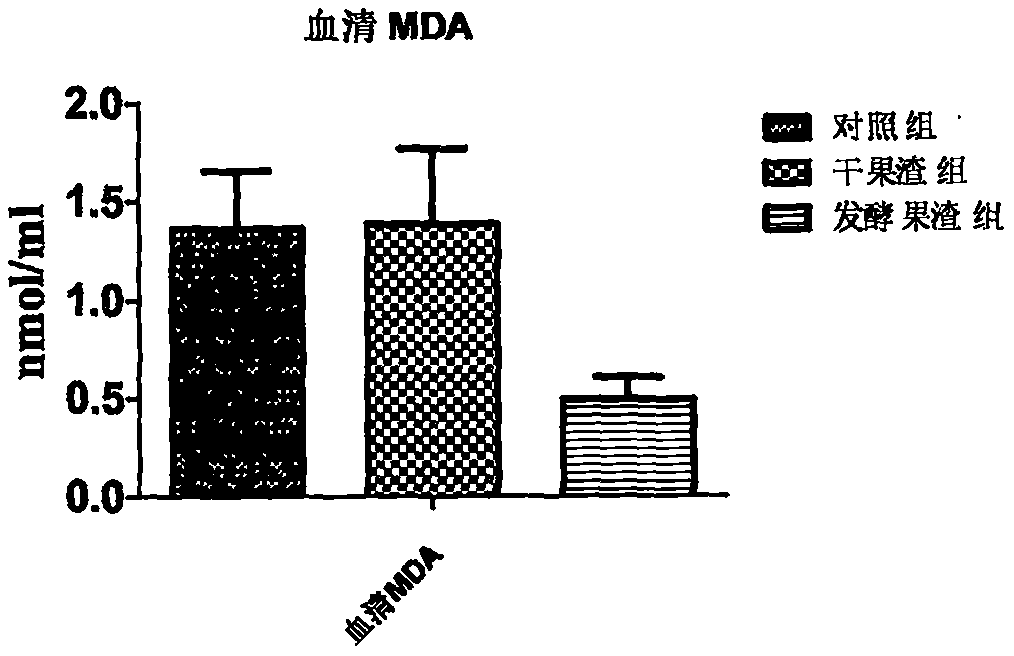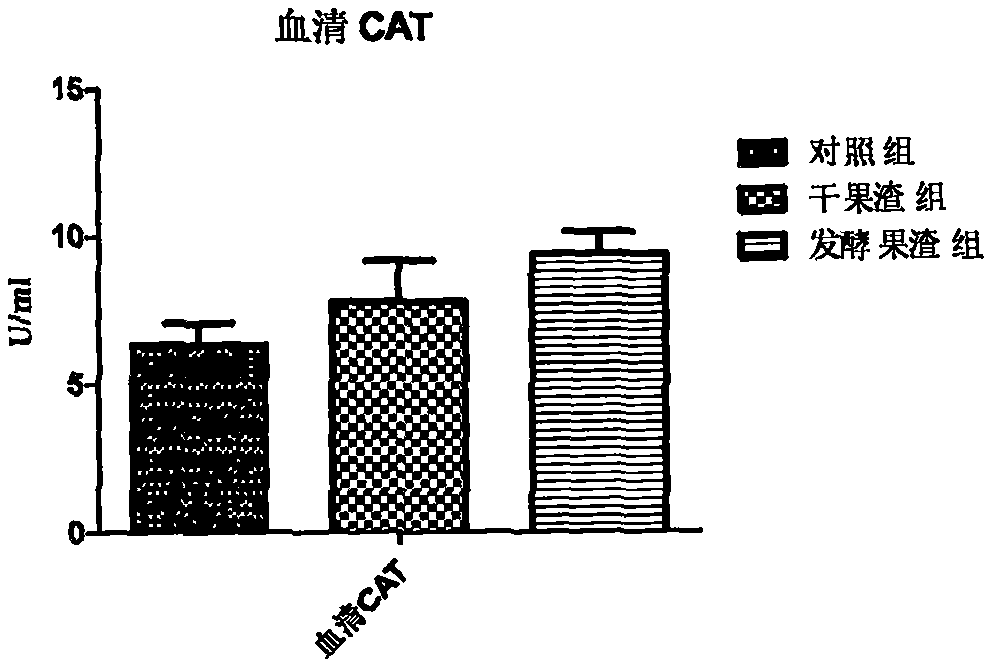Fermentation method and application of mulberry pomace
A fermentation method and technology of pomace, applied in the field of agriculture, can solve problems that are not the ultimate goal of fermentation, achieve the effect of improving the marbling score and improving the quality of meat
- Summary
- Abstract
- Description
- Claims
- Application Information
AI Technical Summary
Problems solved by technology
Method used
Image
Examples
Embodiment 1
[0023] A method for fermenting mulberry pomace, comprising the following steps:
[0024] Step 1, screening the strains used for fermentation, mainly Lactobacillus, Bacillus, Saccharomyces, Bifidobacteria, the ratio is 3:1:1:1, which makes the fermented feed easier to digest and absorb. The protein content, lactic acid content, and phenolic substance content all increased after fermentation.
[0025] Step 2, screening and adjusting the fermentation substrate, the mass ratio of mulberry pomace, bran and corn flour is 9:1:1;
[0026] Step 3, the fermentation time is 4 days.
[0027] The fermented mulberry pomace after step 4 is added in the pig feed.
[0028] In step 1, the lactobacilli include: lactic acid-producing strains, and lactobacillus strains that specifically secrete cellulase and protease.
[0029] In step 4, the dry weight of the fermented mulberry pomace accounts for 10% of the mass percentage of the pig feed.
Embodiment 2
[0031] A method for fermenting mulberry pomace, comprising the following steps:
[0032] Step 1, screening the strains used for fermentation, mainly Lactobacillus, Bacillus, Saccharomyces, Bifidobacteria, the ratio is 3:1:1:1, which makes the fermented feed easier to digest and absorb. The protein content, lactic acid content, and phenolic substance content all increased after fermentation.
[0033] Step 2, screening and adjusting the fermentation substrate, the mass ratio of mulberry pomace, bran and corn flour is 9:1:1;
[0034] Step 3, the fermentation time is 5 days.
[0035] The fermented mulberry pomace after step 4 is added in the pig feed.
[0036] In step 1, the lactobacilli include: lactic acid-producing strains, and lactobacillus strains that specifically secrete cellulase and protease.
[0037] In step 4, the dry weight of the fermented mulberry pomace accounts for 10% of the mass percentage of the pig feed.
Embodiment 3
[0039] After fermentation, add 10% to the feed of finishing pigs, calculated by dry weight. In the experiment, 72 Du large commercial pigs with an initial body weight of about 70kg were randomly divided into three groups, with 24 pigs in each group, 8 replicates in each group, and 3 pigs in each replicate. Be divided into control group, mulberry pomace group (mulberry pomace adds 10% (dry weight ratio), mulberry pomace fermentation group (mulberry pomace dry weight accounts for 10%),. The test period is about 50 days. See Table 1 for details .
[0040] Table 1 Effect of mulberry pomace on growth performance of finishing pigs
[0041]
[0042] After adding, it can promote the growth performance of fattening pigs to a certain extent.
[0043] Such as figure 1 As shown, the results showed that fermented mulberry pomace significantly increased the total superoxide dismutase (T-SOD) activity in the serum of finishing pigs, thereby improving the antioxidant performance of fini...
PUM
 Login to View More
Login to View More Abstract
Description
Claims
Application Information
 Login to View More
Login to View More - R&D
- Intellectual Property
- Life Sciences
- Materials
- Tech Scout
- Unparalleled Data Quality
- Higher Quality Content
- 60% Fewer Hallucinations
Browse by: Latest US Patents, China's latest patents, Technical Efficacy Thesaurus, Application Domain, Technology Topic, Popular Technical Reports.
© 2025 PatSnap. All rights reserved.Legal|Privacy policy|Modern Slavery Act Transparency Statement|Sitemap|About US| Contact US: help@patsnap.com



